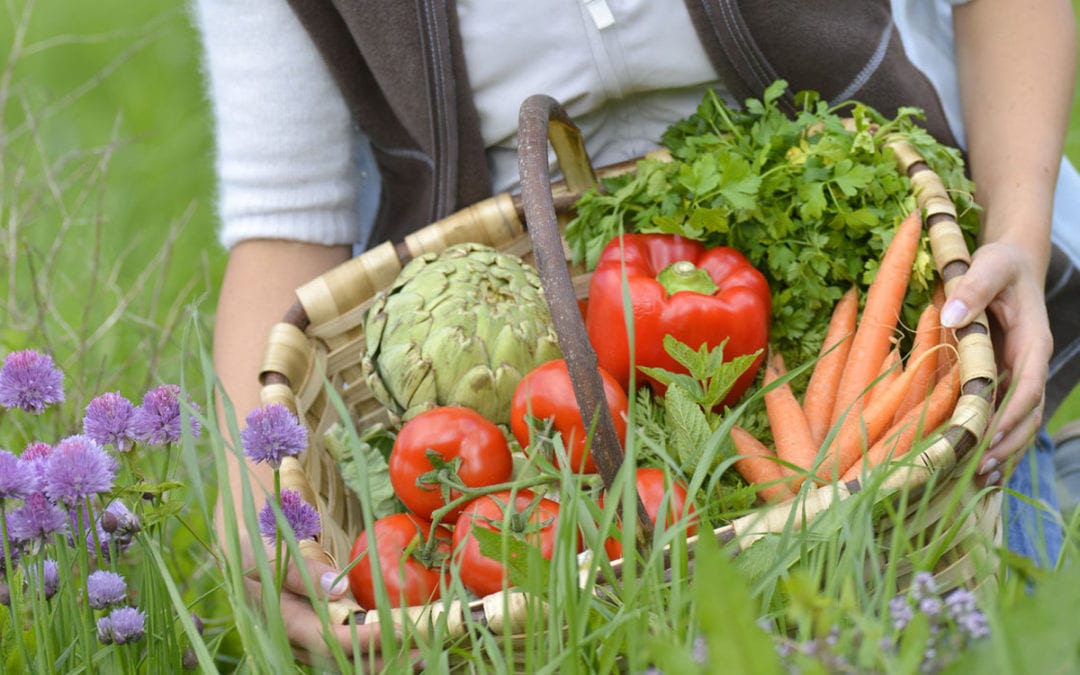Talk to any gardener about growing fruits and vegetables and you just might trigger a discussion on the merits of heirlooms versus hybrids. Many of us agree that heirloom varieties have been around for a while. Just how long is open to interpretation. One common theory is that heirloom varieties are those introduced before 1951 when modern plant breeders began to develop hybrids. Often seed catalogs focus on plants that date back to the 1930s and ‘40s, using the Victory Gardens of World War II as a reference point. And many are much older, especially those that trace their heritage to Europe, Asia, and Africa.
When plant breeders intentionally and carefully cross pollinate two or more different varieties of a plant in an effort to encourage particular traits of the parent plants, they are creating hybrids. Size, better disease resistance, flavor and longer shelf life are a few characteristics that breeders might look for. Heirlooms come from open-pollinated seeds that have been handed down from generation to generation in a particular region or area because they exhibit a particular trait. These traits include size, disease resistance, flavor and shelf life. So it doesn’t seem that much different, does it?
There are a couple of distinct differences though, especially when you throw genetically modified, or GMO seeds into the mix. Firstly, because they’re open-pollinated, only heirloom seeds will produce plants that breed true. This means that you can collect and save your seeds from year to year. Secondly, hybrid seeds tend to produce plants that are more disease resistant and vegetables with a more regular appearance. Neither is the result of genetic engineering. In GMO plants, the genes responsible for particular characteristics are altered in one way or another.
I love the plant lore, so for me, the stories behind the names of heirloom vegetables are a big part of their charm. One of the most famous is that of the tomato called Mortgage Lifter. This tomato was grown during the Great Depression by a radiator repairman from West Virginia. When Charlie’s business suffered, he counted on his garden to see his family through the hard times. Through careful selection, he worked toward a huge, meaty tomato that bred true from one generation to the next. Young plants were sold for a dollar apiece and in a few years, he sold enough to pay off his $6000 mortgage.
Growing heirloom varieties has become something of a revolution in the last few years. Reasons for the rising popularity of heirlooms are as diverse as the heirlooms themselves. Not only does the growing of heirloom vegetables and the saving of seed preserve and enhance biodiversity, it makes available flavorful, condition-specific vegetables that might otherwise be lost to the economics of seed marketing and the practices of industrial agriculture. Growing heirlooms is a direct link to our heritage, making a connection to generations of gardeners that came before us and extending that link to our children, grandchildren and beyond.
The Garden Center gets many of our heirloom vegetable seeds and plants from Seed Savers Exchange in Decorah, Iowa. SSE was founded in 1975 and is dedicated to the conservation and sharing of America’s diverse, and often endangered food heritage. But there are many other seed companies that offer heirloom varieties. Another favorite of mine is Baker Creek Heirloom Seeds. Their Whole Seed Catalog reads like a botanical history book.
Ultimately, what draws gardeners to grow their own produce is the opportunity for variety. We all want tomatoes that taste like tomatoes, not like something strip-mined in Florida. So try something a little different. Someday your grandchildren may reminisce about the same tomato variety that you choose today.

